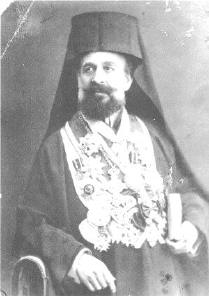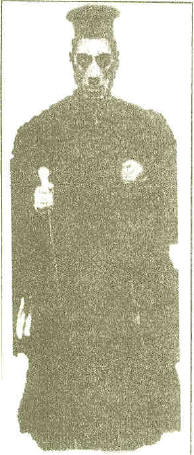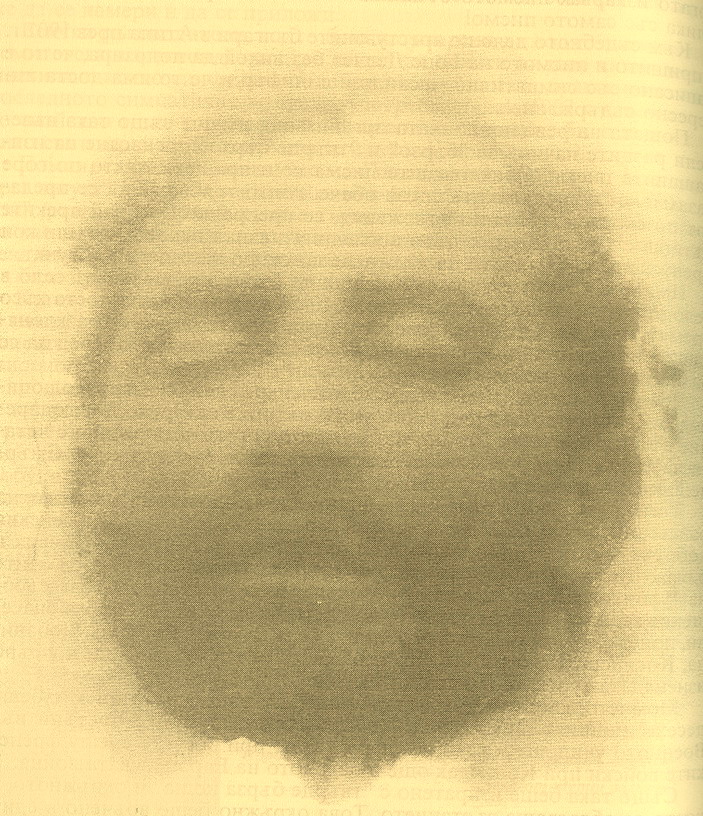
Aegean
Macedonia
Massacre and Barbarism at Zagorichane
Greek Clergy and their
cut-throats claim "God is on our Side"
The burning of the village of Zagorichane (Kostur district)
and the massacre of its inhabitants was done by 7 Greek andart bands
(lead by the so-called "kapetans" Vardas [Lt Georgios Tsontos from
Crete as chief commander], Kaudis, Karavitis, Makris, Kukulakis,
Pulanas, and Melios) on 25th of March 1905.
It is also important to state that at the time of the Greek
attack on Zagorichane, there were no Bulgarian revolutionaries in
the village. Also, just a few days before the attack, the Turkish
asker (commander) came to the village to search for arms. Before he
entered, the asker had his troops blow military horns, an act which
frightened the village population. However, the Turkish officer
explained to the peasants, that this sounding of horns was simply a
military protocol, and whenever they heard it they should remain
calm and realise it meant no danger.

Not uncoincidently the Greek attack on Zagorichane began with
the same blowing of military horns as used by the Turks. If we
consult the account given by the Greek historian Stamatis Raptis in
"O kapetan Poulakas - Captain Pulakas. All Macedonian Struggle.
Heroic Battles. Avengers Bulgarian-Killers. Most Patriotical
Reading. With the True Images of the Heroes." (Athens, 1910, 2520p)
on page 990 he writes
"When Bulgarians hear the horn, they will think, that it is
an asker, and will hurry to hide their weapons, where they can. So
that we shall have time."
The massacre at Zagorichane was documented afterwards by the
Italian gendarme officers Manera, Gastoldi and Albera, Russian
consul Kol, Austro-Hungarian consul Prohaska, and many others. In
his report the Bulgarian diplomat A. Toshev (No. 447, from 30th of
March, 1905) wrote
"They - Russian and Austrian consuls, and Italian officers
Albera, Gastoldi and Manera - were horrified at all that they saw
and found. The streets, and around the church, was strewn with
corpses, many of which had been sadistically mutilated. There were
5-year-old children with their stomachs cut-open and their
intestines ripped out; murdered women with their arms hacked off.
Some of the dead had their skulls smashed and their brains
removed, others had eyes gouged out, many had severed limbs. The
body of the 60 year old priest was covered with wounds. An entire
family had been killed by bombs thrown through the chimney, and
from two holes in the roof. The bodies of the father, mother, and
two children were appalling disfigured by the bombs. The youngest
child, a 5 year old girl, had tried to escape through the door,
but was killed by Greek bayonets. Russian consul Mr Kol was
weeping. Austrian consul Mr Prohaska also had tears in his eyes.
They both claimed that they had not witnessed such horrors and
barbarities even in the time of the rebellion (1903)."
The Sadistic Murder of Lazar Pop
Traykoff
just "Normal Cleric Duties" for the
Greek Archbishop Germanos Karavangelis
a personal account by
Dr HN Brailsford
in Macedonia: Its Races and their Future
Methuen & Co., London, 1906, p193-194
I remember well our first meeting. We began our conversation in
Greek, but in a few minutes we discovered that we had been at a
German University together and the man I had taken for a Byzantine
assumed the guise of a Berliner. Education is rare among the Greek
bishops and I had never met a man among them who spoke a western
tongue. His Beatitude seemed a modern of the moderns. Could this
be the fanatic who persecuted Bulgarian peasants to force them
into his church? Could this be the raging partisan who massed his
people to drive the schismatic Bulgarian bishop from the town? In
five minutes he had professed himself a philosopher. In ten
minutes he had avowed himself a free-thinker.

But there, above my head, on the wall, in a conspicuous place hung
the photograph of a ghastly head, severed at the neck, with a
bullet through the jaw, dripping blood. And then I remember the
tale. That head belonged to a Bulgarian chief. A band of bravoes
in the Archbishop's pay had murdered him as he lay wounded in
hiding. And the tale went on to tell how the murderers carried the
bleeding trophy to the Palace and how the Archbishop had had it
photographed and paid its price of fifty pieces of gold. And
there, over my head, hung the photograph. Somehow, we stopped
talking moral philosophy.
We met once again, and this time in the Konak of the Turkish
Kaimakam and once more a photograph caught my eye. It showed the
Turkish authorities standing in full-dress round a Turkish cannon
and in their midst, handsome and conspicuous with an air of
mastery and command, was the Archbishop himself. And then I
remembered another tale which told how his Grace had sent his
bravoes to guide the Turkish troops in their work of massacre and
blessed the cannon that was to batter the Bulgarian villages to
dust.
Bishop Germanos Karavangelis
The Devil's Disciple
The leaders of the Greek Orthodox Church were the most crazed
supporters of the Greek state's plan to eliminate the Bulgarian
element from Macedonia. This allegiance to a program of human
genocide is typified by the actions of the Metropolitan Bishop
Germanos Karavangelis.
Information on Karavangelis's psychotic behaviour is available
directly from his very own autobiography "Pinelopa Delta",
published in 1959 by the Salonica Institute for Studies. In that
work we note the following (and many more) admissions and comments
by Karavangelis
He was the first and most fervent champion of the emergence of the
andarts' (Greek cut-throats, murderers etc) movement in Macedonia.

For seven years (1900-1907), as Metropolitan Bishop of Kostur, he
maintained the slogan "let no Bulgarian remain alive".
Together with Vardas, a Greek army officer, he inspired and helped
organise the massacres at Zeleniche (Lerin) and Zagorichane (Kostur).
Massacres which shocked the international community by the level
of depravity and sadism which occurred.
Karavangelis regularly used assassins to eliminate people he had
pre-selected. These killers were paid 5 pounds by Karavangelis, on
delivery of the person's severed head. So proud was Karavangelis
of his actions, that he had one of these "trophies" photographed
and displayed in his office.
As the level of andart activity increased, he writes in his
autobiography
"I kept regular contact with them through the consulate in Bitola
and the Metropolitan bishops. I personally met them and instructed
them to kill all priests and Bulgarian teachers."
It is surprising that the Greek Church has not sought to canonise
Karavangelis for his unswerving duty to God and country. But then
perhaps they already have.
PICTURES FOR ETHNOSIDE AGAINTS THE
BULGARIANS IN AEGEAN MACEDONIA FROM GREEK PROPAGANDA
VASIL CHEKALAROV-KILLED FROM GREEK PROPAGANDA IN
AEGEAN MACEDONIA, 1914.

LAZAR POPTRAIKOV (LAZAR PAPATRAIKOV)
KILLED FROM GREEK PROPAGANDA IN AEGEAN
MACEDONIA, 1903.

By:
www.mak_truth.com
|